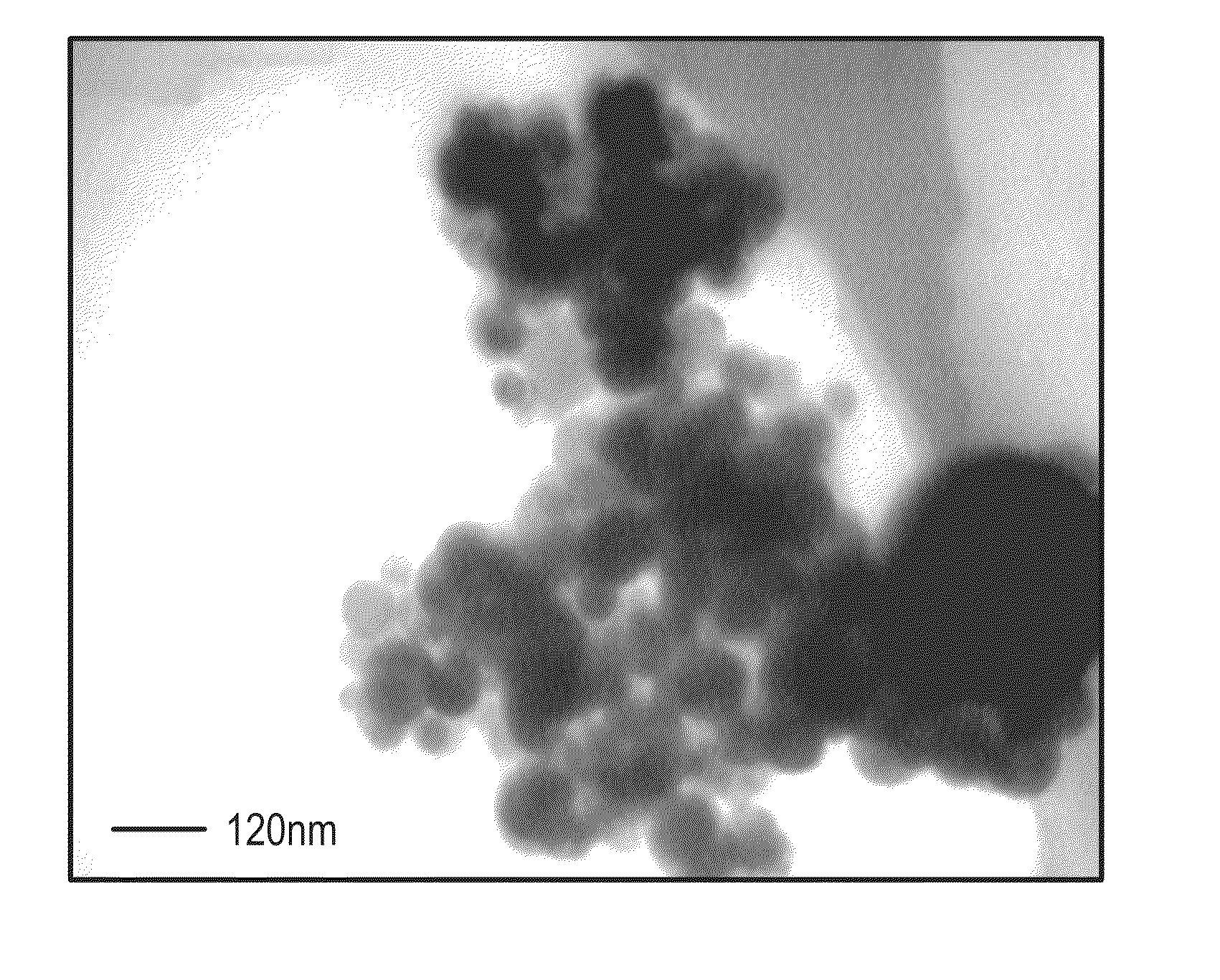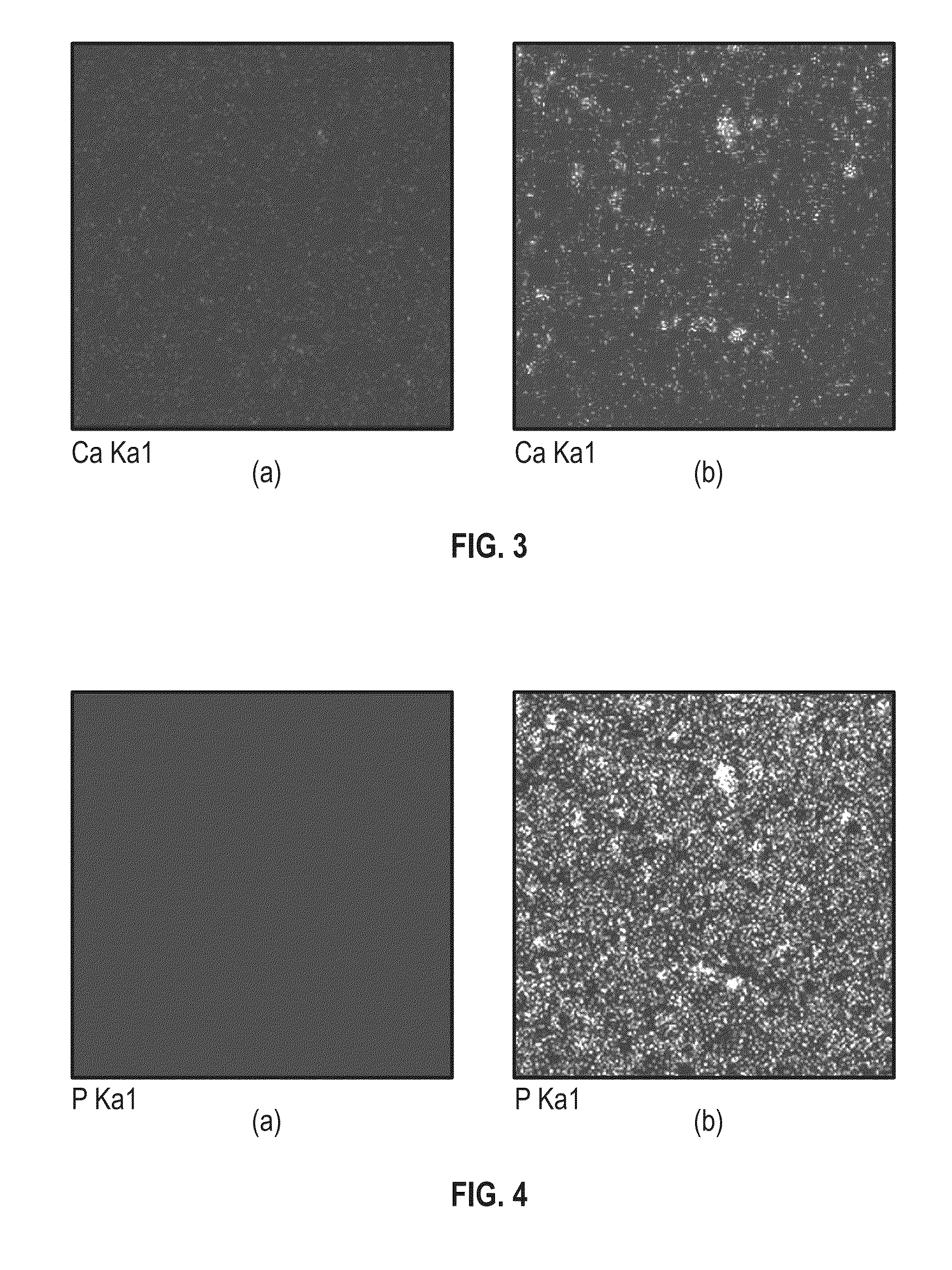Nano-composite polymeric coating for the conservation of leathers and method for synthesizing the same
a technology of nano-composite polymer and conservation leather, which is applied in the field of nano-composite polymer compound, can solve the problems of devoid of such advantageous features of lubricants in the prior art, and achieve the effects of improving the strength and flexibility of the target leather object, improving the protection effect, and improving the structural strength and flexibility
- Summary
- Abstract
- Description
- Claims
- Application Information
AI Technical Summary
Benefits of technology
Problems solved by technology
Method used
Image
Examples
example 1
Synthesis of the HA / PEG Nano-Composite
[0061]In this example, a HA / PEG nano-composite pursuant to the teachings of the present invention is produced via the dispersion of HA nanoparticles in a two-phase mixture. Accordingly, polyethylene glycol, with a preferred molecular weight of about 400, and nano-hydroxyapatite in a water suspension were obtained. Firstly, a 10 ml solution, with a PEG content of about 15% by volume in deionized water, was prepared and then about 0.1 ml of a 10% wt HA aqueous suspension was added to it. The resultant two-phase solution was vigorously stirred at a rate of about 240 rpm for about 30 min at ambient temperature by a magnetic or other stirrer, until the solution became semi-transparent and homogenous.
[0062]With reference now to FIG. 1 of the DRAWINGS, there is shown a transition electron microscopy (TEM) image of hydroxyapatite particles, such as used in practicing the principles of the present invention. This image confirms that the hydroxyapatite pa...
example 2
Historical Leather Treatment by the HA / PEG Nano-Composite
[0063]In this embodiment example, a type of historical goat leather of a book cover from the Qajar era (19th century) with vegetable characterization tanning and hand coloring was obtained. A piece of the aforesaid leather was used as the “control” sample, designated herein as “control.” For nano-composite treatment, a rectangular form of the historical leather sample is placed in the nano-composite solution, prepared according to the procedure described in connection with EXAMPLE 1 hereinabove, under magnetic stirring for about 15 min at room temperature. Then, it was removed from the solution and then, the treated leather surface was softly dried by a soft cloth and stored in a desiccator at room temperature for about one week before mechanical and thermal testing. In addition, the samples were conditioned in the test room at 23° C. and 50% relative humidity (RH) for 24 hours before mechanical property testing. A piece of th...
example 3
Aging Procedure
[0098]In this example, the structural changes during the time lapse for the “control” and the “optimum” (treated by the aforenoted HA / PEG nano-composite) samples are investigated through an accelerated aging procedure. Accordingly, two pieces of the leather samples are prepared pursuant to the method described in EXAMPLE 2 (designated as “control” and “optimum”), and were artificially aged in a chamber for 1000 hours. The samples were then exposed to a cyclic test: first, 16 hours at 40° C. under a relative humidity of 80%, a first cycle at substantially room temperatures and high humidity, followed by 8 hours at 15° C. under a relative humidity of 5%, a second cycle at lower than room temperatures and low humidity, and a UV radiation treatment provided by an ultraviolet B (UVb) lamp with a power of 8 W. Accordingly, the obtained artificially-aged “control” and “optimum” samples were coded as “AC” and “AS,” respectively. The obtained samples were analyzed by the same ...
PUM
| Property | Measurement | Unit |
|---|---|---|
| molecular weight | aaaaa | aaaaa |
| size | aaaaa | aaaaa |
| size | aaaaa | aaaaa |
Abstract
Description
Claims
Application Information
 Login to View More
Login to View More - R&D
- Intellectual Property
- Life Sciences
- Materials
- Tech Scout
- Unparalleled Data Quality
- Higher Quality Content
- 60% Fewer Hallucinations
Browse by: Latest US Patents, China's latest patents, Technical Efficacy Thesaurus, Application Domain, Technology Topic, Popular Technical Reports.
© 2025 PatSnap. All rights reserved.Legal|Privacy policy|Modern Slavery Act Transparency Statement|Sitemap|About US| Contact US: help@patsnap.com



